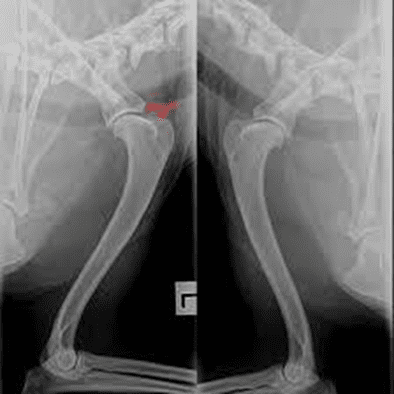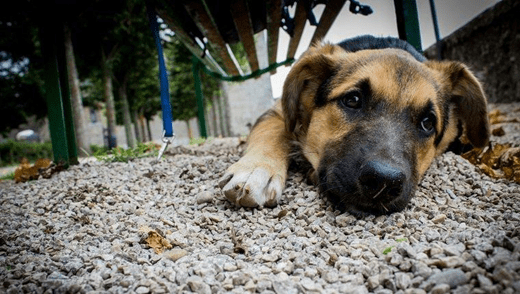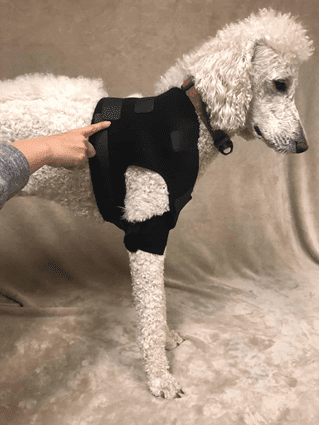Complete Guide to Dislocated Shoulders in Dogs.
Animals are very important in our lives. If they do not act as pets, they will be on standby as our security at home. Dogs are animals that fall into such a category. Hence, the need to take very good care of them in feeding and also their health requirements. In this piece, we will look at Dogs’ shoulders and guide how to take care of them.
What is Shoulder Dislocation?

The term “shoulder dislocation” refers to a situation whereby a bone is displaced or separated away from a joint due to the tear in ligaments holding the joint. There are total and partial dislocations. We have “subluxation” when such separation is partial. While subluxation is the partial abnormal separation of bone surfaces from a joint, the complete displacement or separation of the shoulder bone from its joint is referred to as “luxation.”
Usually, the shoulder joints of dogs are quite movable compared to other limb joints. And just after dislocation, there is a need to get it restored to its normal appropriate position so that the surrounding casing would heal on time.
An aftereffect of trauma frequently causes shoulder dislocation in dogs. For instance, when a dog gets hit by a vehicle. The earlier a dislocated shoulder is treated, the better.
Causes of Dislocated Shoulders in Dogs
A couple of research has been conducted to determine the root cause of shoulder dislocation in dogs. Therefore, it has been obtained that a combination of factors may lead to this difficulty.
First, it has been established that there are two basic forms of shoulder dislocation, namely:
- Trauma-induced dislocation
- Congenital dislocation

A trauma-induced dislocation is most often caused as a result of trauma such as accidents. In comparison, congenital dislocation is usually obtained from birth and then aggravated due to stress at later stages.
Most times, a shoulder dislocation is common amongst miniature breeds. The condition causes lameness which might affect both sides, causing pains and disturbance in walking. So, the causes of dislocated shoulders in dogs is a medieval one that affects the functioning and mobility of the shoulder.
Dislocated Shoulder Symptoms in Dogs
There are specific symptoms to make you decipher if your dog has a dislocated shoulder. And it would help if you were very careful and observant of them. These symptoms include:
- When your dog suddenly begins to limp or show lameness.
- When it’s hesitant to either walk or jump.
- It exhibits pains when the joint is being touched.
- When the dog continuously licks the joint.
- When it shows a lack of appetite.
- When it has a decrease in activity level.
Other symptoms include:
- Swelling at the site of dislocation.
- Partial weight-bearing.
How to Identify a Dislocated Shoulder in Dogs
In cases of congenital shoulder dislocation, you can notice shoulder lameness in your dog when it is between three (3) and eight (8) months of age. As soon as your veterinarian conducts physical tests and examinations, it would help to mention any noticeable symptoms in your dog and when you first witnessed such. The vet has to check your dog’s dislocated shoulder, paying special attention to whether the dog’s motion range and its ability to extend is cut to the barest minimum.
After that, the vet then determines whether your dog feels pain or discomfort and checks if it can return the shoulder to the position.
Diagnosis
If the dislocation is chronic, the vet would realize that the supraspinatus, infraspinatus, and pectoral muscles have reduced. However, if your dog has experienced trauma or has grown to get injured due to intense activity, you have to take it to a vet yet again, who then conducts a full-scale examination on it.
The information would be asked as regards the trauma or events that caused the injury. Subsequently, other tests such as X-RAY, CT scan, or even the MRI Scan would be taken as the doctor deem fit. This is basically because the results of routine laboratory tests, for instance, blood count, urinalysis, etc., is always as normal as they are in affected animals, should there be no other similarly occurring disease.
How to Treat Dislocated Shoulders in Dogs

The shoulder dislocation must get treatment. When done as soon as possible, it leads to great results for a better recovery. The veterinary doctor would often make a closed reduction—a procedure that allows the joint to be placed back to its initial position. Usually, your dog would require general anesthesia with a bandage used to hold the dog’s joint back into its proper alignment.
The major method that can be adopted to treat dislocated shoulders in dogs include:
- Complete rest to reduce swelling and pain.
- Joint stabilization.
- Bandages.
- Apply packs of ice blocks or cold compresses to reduce inflammation.
Cost of Treatment of Dislocated Dog Shoulders
The cost of treating a dislocated dog shoulder varies and depends on the severity of the dislocation. The cost of treating a dog’s broken bone ranges between $200 and $1,000 or more. Meanwhile, certain minor fractures may not require any special treatment. In such situations, the dog only needs to rest. However, other compound fractures might need surgery where steel plates would be inserted into such an animal’s limbs.
Therefore, it is advised that in extreme conditions for dogs, both surgical and conservative medications could be used together to combat their discomfort. However, ensure to locate a specialized veterinarian where the treatment may be carried out properly and at the right amount.
Dislocated Shoulder Treatment
There are two basic methods of treating dislocated shoulders in dogs. However, notwithstanding the kind of treatment put into use, early diagnosis of the dog’s shoulder dislocation is essential to avoid irreparable consequences. Hence, you should help your pet lead an active and healthy lifestyle.
The methods of treatment include:
● Surgery:
When the veterinary doctor diagnoses and sees that the joints’ ligaments are damaged beyond expectation, the next thing to recommend is surgery. The surgery will allow the vet to sew the joint capsule back together. This is to support it once it has been repaired back to its initial position. Although it depends largely on the extent of damage to the shoulder, screws, pins, or washers might as well be used in place of the torn ligaments, thereby holding the joint back in place.
● Braces:
While a few people may consider opting for surgery to correct dislocated shoulders for their dogs, braces are also an effective method of treating a dislocated dog’s shoulder. Far beyond the use of drug prescriptions, mobility aid such as braces can assist in restoring a dog’s confidence and relieving it of pains. Most drugs admitted have direct side effects on dogs’ liver and kidneys. Hence, if you have the choice of helping your dog with some physical device to heal, won’t you then go for it? In cases where surgical operations have been undergone, braces can help support the dog’s shoulders.
Meanwhile, there are other treatment methods too. Since the primary motive for treatment is to provide ultimate rest, the dog’s shoulder joint can also be stabilized and treated to reduce worsening symptoms. This include:
- Applying bandages.
- Cold compressions.
Factors Determining The Healing Process
A couple of factors determine the healing process of dislocated shoulders or shoulder injuries in dogs. The most important of them all, which needs to be carefully understood, include:
- The severity of the dog’s shoulder injury.
- The kind of treatment adopted.
- Age and attitude of the dog before injury and treatment.
- Time required post-treatment.
To have a fast healing process, you must ensure your dog performs enough exercises by following the instructions and guidelines previously provided herein in this article. The faster you adopt it, the better.
Exercises for Dislocated Shoulders in Dogs
If your dog is afflicted with a dislocated shoulder, it is pertinent that you restrict it from carrying out intense activities. Naturally, dogs would be active and would like to play. But you need to help it perform just moderate exercises as might have been instructed by your veterinarian. The time given for these exercises might be weeks or even months, depending on how severe the dislocation is to the joint.
In the same vein, you need to be careful by not making your dog have too much rest, as this might lead to obesity. And this is just why you have to ensure it engages in mild physical fitness throughout the recovery phase. Listed below are exercises that can be used to relieve dislocated shoulders in dogs:
● Hydrotherapy
This is an exercise meant for dog rehabilitation that may occur on an underwater treadmill. It can as well be carried out in a pool under the supervision of a rehabilitation professional.
If your dog has a shoulder injury or dislocation and has difficulty walking, it can be subjected to the underwater treadmill. The water buoyancy makes the dog’s weight and makes it float, thereby moving on the water without hassles. When it does this with time, your dog’s muscles will soon be strengthened and will soon heal again without pain.
● Swimming
Usually, swimming occurs in a controlled environment. It is a viable treatment method for mild or moderate situations of a dog’s shoulder dislocation. However, it is usually a little difficult to maintain speed control, intensity, or proper use of limbs in severe cases. A life jacket can be worn for the dog to make it stay longer in water and maintain a great cardio workout.
● Downhill Walking
In contrast to walking on a horizontal surface, making your dog walk downhill will make it experience an increased joint flexion in several parts of its body joints, including the shoulders.
Other exercises that may be practiced include:
- Shoulder strengthening
- Core strengthening
- Stability proprioception
- Flexible stretching
Natural Remedies for Dislocated Shoulders in Dogs
Besides the several conventional treatment methods to cure dislocated shoulders in dogs, other natural remedies have equally proven to work better and are very effective. They include:
● Acupuncture:
This is a branch of ancient Traditional Chinese Medicine (TCM) that humans and animals have used for many years. The method it takes to work is by utilizing the body’s ability to heal by itself. If administered to a dog with a dislocated shoulder, acupuncture would ensure the dog’s health and balance are established.
Usually, it is administered by TCM practitioners who are registered health professionals and veterinarians, as it is usually a stand-alone course.
● Dry Needling:
Here, the process of dry needling is a little different. It is the use of needles to target tight muscles. It is an effective method of conservative natural treatment that must be carried out only by registered health practitioners.
● Weight Control:
You have to ensure the weight of your dog does not exceed the norm. This is because weight control is a major part of its healing. When there is an overweight dog, there will be more pressure on the limbs, which in turn affects its shoulders when your dog walks or manages to run.
● Apply Ice:
You can equally apply packs of ice around the shoulders of your dog. This is also a natural way of reducing the swelling of the affected area.
● Cage Rest:
Rest is very important to your dog’s recovery from a shoulder dislocation more than anything else. It needs to take a break from tedious activities. However, it must not be too much to avoid obesity.
Shoulder Injury Prevention in Dogs
To prevent a recurrence of shoulder injury or dislocation in your dog, there are several methods for you to incorporate into its daily routine. These include:
● Proper Weight:
When your dog maintains proper weight control, it would be physically fit and would be less susceptible to injuries caused by obesity.
● Light Exercises:
It is your duty as a dog owner to make sure your dog practices light exercises regularly. This will assist in preventing any form of shoulder injury in the future.
● Healthy Diet:
When you feed your dog with the appropriate meal combinations, it boosts its bones and strengthens its tendons and joints equally.
● Limb And Feet Stretching:
Stretching the limbs and feet keeps the dog’s shoulders well exercised.
● Robing Your Dog:
When you dress your dog in sporting wear and gears in times of sports to reduce the risk of crashes and sprains in the shoulder joint.
● Massage:
Regular physiotherapy massage of your dog’s legs and limbs by yourself or the veterinary doctor can prevent future shoulder injury crises.
Conclusion
Shoulder dislocation in dogs is either caused by trauma or is congenitally induced. A trauma-induced dislocation is most often caused as a result of trauma such as accidents. In contrast, congenital dislocation is usually obtained from birth and aggravated due to stress at later stages.
Symptoms of a dislocated shoulder are visible when your dog suddenly begins to limp or show lameness; when it’s hesitant to either walk or jump; when it exhibits pains when the joint is being touched; when the dog continuously licks the joint; when it shows lack of appetite or when it has a decrease in activity level. A good veterinarian should be consulted to carry out proper diagnosis so that appropriate treatments can be recommended. Dislocated shoulders can be treated by braces or natural methods such as cage resting the dog or applying ice on its shoulders. However, in serious situations, surgery would be conducted.


